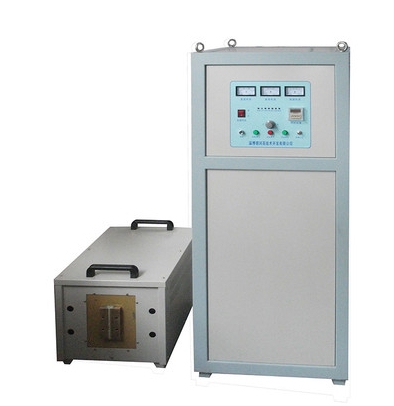- 15
- Nov
Process analysis of heat treatment drill bit and its implementation points
Process analysis of heat treatment drill bit and its implementation points
A drill bit is a kind of cutting tool with slender shape and used to process holes of various sizes. The blade is long and thin. It is subjected to compressive stress and friction in the process of drilling dense metals, and it will also withstand a certain torque and high Due to the effect of bending stress and compressive stress, the working conditions are very bad. For this reason, many heat treatment manufacturers use IGBT high-frequency heating equipment for heat treatment, hoping to improve its hardness, wear resistance and service life to meet the needs of work.

(1) Considering that too high heating temperature and long holding time will lead to coarse grains of the drill bit, network carbides are prone to appear, overheating or overburning, so lower heating temperature and shorter heat preservation time should be used. time. The cooling adopts multiple grading or austempering, the purpose is to reduce the temperature difference between the inside and outside of the drill bit, reduce the internal stress, and the isothermal cooling will transform part of the retained austenite into lower bainite, which can effectively reduce distortion and cracking, and improve the drill bit’s performance. toughness.
(2) The straightening of the drill bit is to use a flat steel plate as the measurement standard, press the drill bit by hand and roll it on the flat plate, check the gap with a feeler gauge, and straighten the deformation that exceeds the requirement. The method is to hammer the low point of the handle. . Use hot spot straightening for those that cannot be manually adjusted. For large-diameter drills, hot straightening should be performed immediately after quenching. Since there are more retained austenite and lower hardness, straightening is easier and good results will be achieved. In addition, salt bath corrosion of the drill bit is also an important issue that needs attention.
(3) In order to prevent the stabilization of retained austenite, attention should be paid to tempering in time. Considering that the transformation of retained austenite is carried out during the tempering cooling process, it should be slowly cooled to room temperature in air after each tempering, and then the next tempering should be carried out. In order to control the deformation of the drill bit, it is required that the speed of tempering must be fast.
(4) For the impact drill, the material is 40Cr, and the diameter is mostly below 50mm. The round steel is processed and formed, the head is slotted, and the high-frequency brazed cemented carbide tool bit. The technical requirement is overall hardening, with a hardness of 40-50HRC, so IGBT high-frequency heating equipment can be used for heating at 840-850℃ to ensure that the drill has a good strength and toughness.
